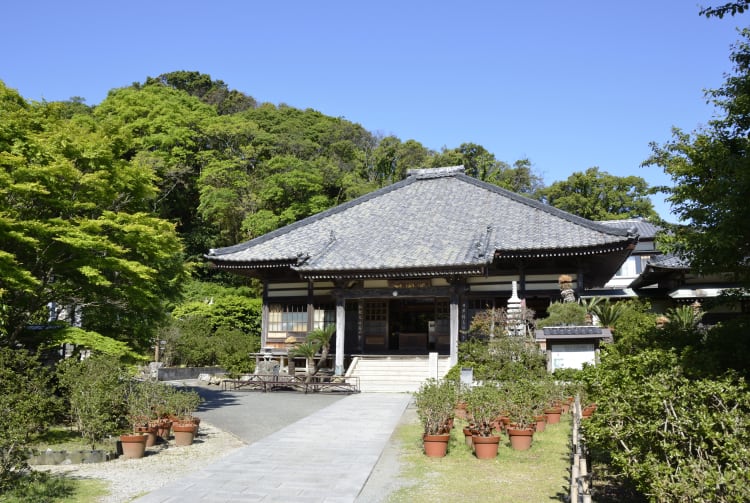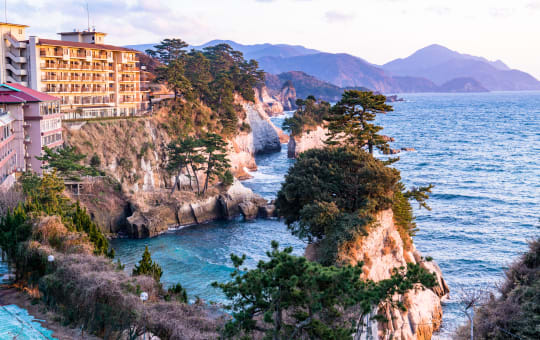A temple full of history
In 1854, the small seaside city of Shimoda became the first port to open to the United States. Ryosenji Temple, a key location in the forging of U.S.-Japan diplomatic relations, lies in the heart of Shimoda . Come and see the site of these historic negotiations.
How to Get There
Ryosenji Temple is a 10-minute walk from Shimoda Station.
If you're coming from Tokyo, take the JR Shinkansen Tokaido Line to Atami Station, about 50 minutes away. From Atami, take the JR Ito Line to Ito Station, another 25 minutes. From there, it's an hour on the Izu Kyuko Line to Shimoda Station.
Quick Facts
Ryosenji Temple is where the U.S. Government and the Japanese Tokugawa shogunate eventually signed the Treaty of Peace and Amity in 1854
Ryosenji Temple also has an attached museum, with three thousand artifacts telling the story of cross-cultural communications from the 16th to 19th century and covering the arrival of Commodore Perry's Black Ships
Every year in May, the town of Shimoda commemorates Commodore Perry's arrival to Shimoda with the Black Ship Festival
Peace and Amity
Ryosenji was the site of historic talks between the United States and the Tokugawa Shogunate in the mid-nineteenth century. The talks were part of larger negotiations which effectively ended Japan's policy of national seclusion, or sakoku. The talks at Ryosenji led to the Shimoda Treaty and were conducted between Commodore Perry and Hayashi Daigaku, the shogunate's chief negotiator. History remebers Hayashi as a skillful negotiator who concluded treaties with the US peacefully and satisfactorily, securing mutual concessions.

Opening the nation
Today, the temple stands as a monument and museum to those meaningful negotiations. Housing over 3,000 articles relating to Perry and his Black Ships, come and get lost in the history of this temple and museum. It is sometimes referred to in Japanese as “The Hall of Opening the Nation,” a reference not just to the treaty agreed upon here, but also to Shimoda as the first town where foreigners were allowed to walk around and freely interact with locals.
Shimoda and Ryosenji—symbols of cultural exchange
The Shimoda Treaty agreed upon at Ryosenji set out rules for American citizens to abide to in Japan, and permitted certain freedoms including full access to the town of Shimoda. The town became increasingly international and a center of cultural exchange. Ryosenji remains a symbol of grassroots cross-cultural exchange and is designated a National Historic Site.


























































